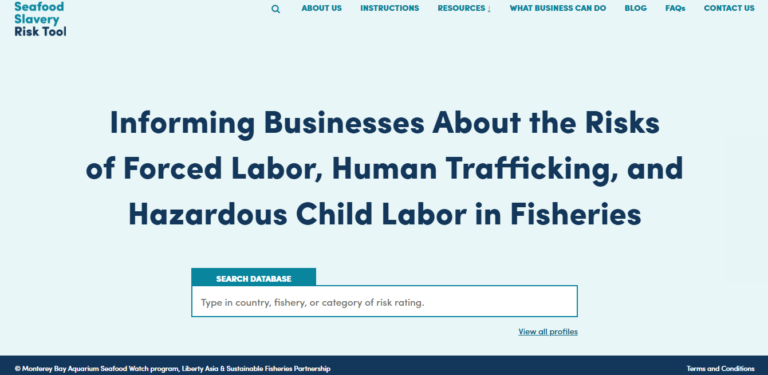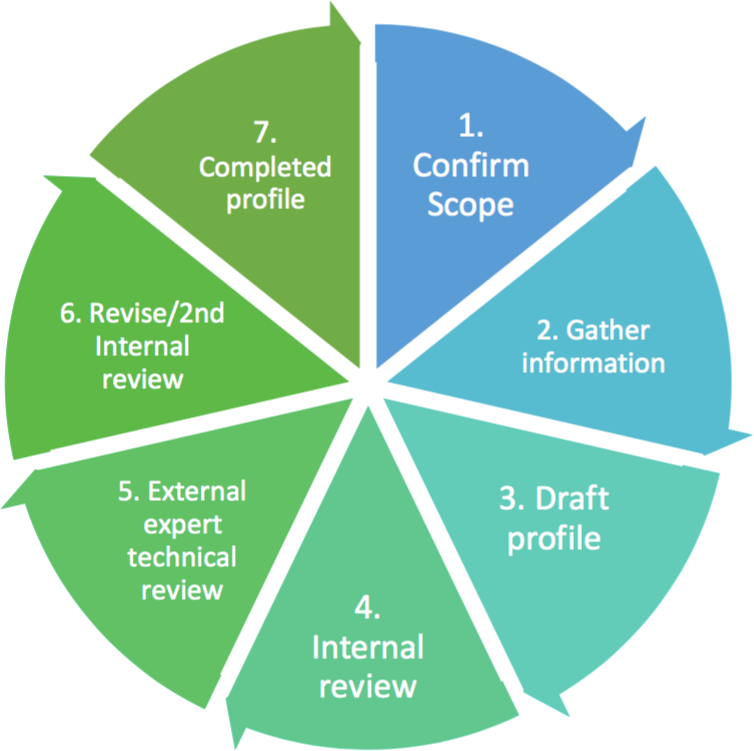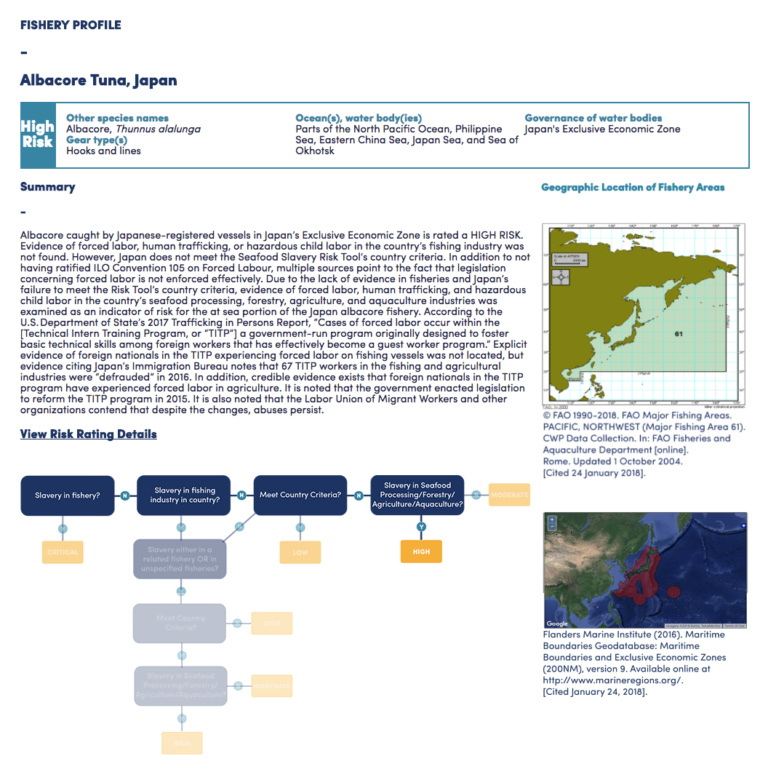
What is the Seafood Slavery Risk Tool?
The Seafood Slavery Risk Tool is a risk indicator tool that provides knowledge and information based on professional assessments and perspectives from the fishing industry, civil society, and the anti-modern slavery community. The Risk Tool is not an ‘app,’ and there’s no algorithm that produces a rating solely from data scraped off the internet.

The Risk Tool rates the likelihood that forced labour, human trafficking, or hazardous child labour is occurring on fishing boats in a fishery. Ratings are not produced for countries. Evidence from credible media and authoritative institutions and civil society organizations is evaluated according to the Risk’s Tool criteria to determine a profile fishery’s rating. A fishery can be rated critical, high, moderate, or low risk. Read their Methodology and FAQs for more information.
The Seafood Slavery Risk Tool’s fishery profile development process
Who is the intended user of the Risk Tool?
The Risk Tool was primarily created to give businesses in the seafood and financial industries credible information about the risks of forced labour, human trafficking, and hazardous child labour in the at sea portion of seafood supply chains, so they will engage with suppliers and other stakeholders to improve conditions. Users of the Risk Tool must still undertake comprehensive due diligence before making sourcing and investment decisions. Producers, NGOs, consumers, and other groups that have an interest in promoting sustainable seafood and human rights are welcome to use the Risk Tool. Read What Businesses Can Do.
What evidence is used to generate ratings?
Ratings are generated exclusively from credible, open-source information. Sources may include media reports and investigative journalism, publications by inter-governmental organizations, government reports, NGO reports, and academic and think tank publications. The Risk Tool collects and organizes the available evidence and reveals where information gaps exist.
How to use the Risk Tool
To use this Risk Tool, you’ll first need to know a few basic data points about your seafood products, including:
- Latin or common species names;
- Catch locations, which could be the country of origin or flag nation of the fleet catching the seafood; and
- Fishing gear types (aka harvest method) such as bottom trawl, purse seine, longline, pole-and-line, etc.
Second, check the Risk Tool’s database for ratings on your seafood products: enter the Latin or common name of a fish, country, seafood product, or risk category. You can also select “View All Profiles.” Search results will include the risk rating, key information about the profile fishery, and a summary explaining the rating. A PDF of the complete fishery profile is available to download.

An example of a risk rating profile in the database
The Risk Tool’s partnership
The Seafood Slavery Risk Tool is jointly run by the Monterey Bay Aquarium Seafood Watch program, Liberty Asia, and the Sustainable Fisheries Partnership.
Click here to go to the Seafood Slavery Risk Tool



